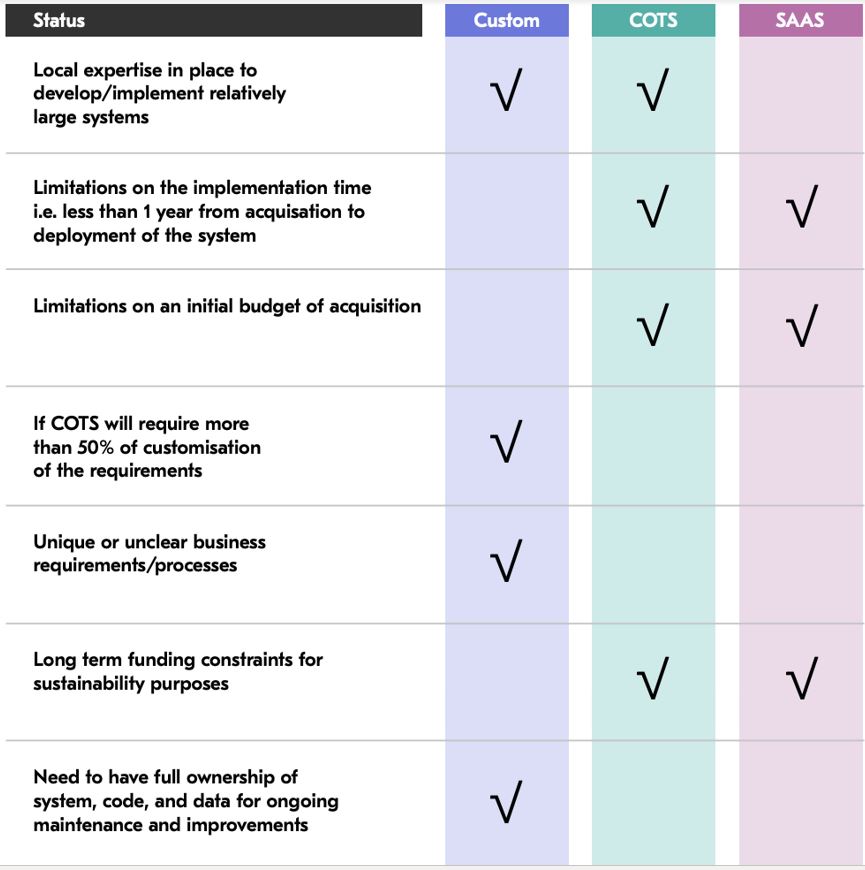Public procurement markets are worth a staggering 13 trillion USD per year. Efficient procurement is vital to improve lives of people and achieve every sustainable development goal. For example, four of ten key barriers to achieving SDG 3 on universal health care are procurement related.
Digital transformation has enormous potential to make procurement systems more open, fair, and sustainable. For example, the introduction of electronic government procurement (e-GP) technologies in Ukraine resulted in savings of over 6 billion USD and reduced perceptions of corruption among business people by half.
However, procurement is not delivering on its potential. It is stifled by slow manual processes, box-ticking, cronyism, and rent seeking. The resulting systems are often inefficient, unfair and wasteful. The COVID-19 pandemic has worsened and exacerbated these challenges.
In Africa, for example, many governments have struggled to introduce effective e-GP systems despite tens of millions of dollars in donor support. The Open Contracting Partnership decided to “get under the hood” of these projects by analyzing five e-GP projects from across Africa, using the following framework of key indicators.

We found that many projects lacked long-term sustainability planning, or experienced staffing deficiencies, insufficient user research, unspecified requirements, and under-resourced change management.
Our new report “Fulfilling the promise of e-procurement” captures these findings and proposes eight recommendations, accompanied by specific tools and guidance, to improve the conceptualization, design, procurement and implementation of e-GP systems.
1. Articulate clear, outcome-oriented goals through an e-GP strategy.
Our research showed that a clear plan of action can create a unified sense of direction for all stakeholders inside and outside government.
2. Set yourself up for success with an effective governance structure and a strong project team.
Having a dedicated team with appropriate roles and competencies focused on implementation yields better outcomes. Getting decision makers and stakeholders aligned and collaborating effectively is crucial.
3. Plan for sustainability and system maintenance from the start.
An e-GP project needs a long-term sustainability plan that includes funding, staffing, and capacity to maintain and improve the system for years to come.
4. Align the policy and legal framework to enable digital transformation.
Adoption of an e-GP project requires updating the legal framework to limit resistance to change and provide the government with powers to enforce the implementation of the system.
5. Design the system and define requirements (including data) with your stakeholders.
To avoid requests for expensive changes in software requirements and cost overruns, and to ensure the system responds to local needs, the development of user requirements should be as consultative as possible, starting as early as possible.
Defining data requirements for the system is critical at this stage: Is it important to track and report on cost overruns? Participation of women-led business? Use of green criteria? The Open Contracting Data Standard can address these needs and prioritize data fields according to local requirements.
6. Tailor a country’s choice of system to your context and your needs.
There are three major types of e-GP systems: Customized Off the Shelf, Software as a Service (SAAS), and Custom Build (COTS). Governments are sometimes sold on the benefits of a specific type without being adequately informed of the risks. The chart summarizes the factors that help determine which system is best suited to local needs.

7. Ensure flexibility and collaboration with your vendor through careful contract and relationship management.
Our research showed that there was a breakdown in relations between the developer and implementing agencies in some countries due to poor contract management and lack of engagement between the parties. Ensuring that the vendor has a local presence and flexibility to incorporate user feedback and new requirements can help.
8. Develop and execute a robust change management and capacity building strategy.
One of the biggest regrets shared by e-GP teams was not having change management plans baked in from the beginning. Big changes tend to encounter resistance. A change management strategy can help communicate changes in time, win over hearts and minds, and modify behaviors, ensuring that systems will be adopted and have a chance at delivering intended results.
Review the full guide at www.open-contracting.org/Africa-egp





